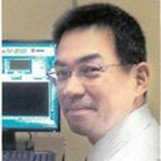Sensing and Imaging Technology in Dentistry
A special issue of Sensors (ISSN 1424-8220). This special issue belongs to the section "Optical Sensors".
Deadline for manuscript submissions: closed (22 July 2022) | Viewed by 91624
Special Issue Editors
Interests: restorative dental materials; resin composites; adhesives; invasive dentistry; diagnostic modalities; digital; clinical
Special Issues, Collections and Topics in MDPI journals
Interests: diagnosis; resin composites; dental; nanoceramic; adhesives; enamels
Special Issues, Collections and Topics in MDPI journals
Special Issue Information
Dear Colleagues,
Recent developments in sensing and imaging technologies have made a huge impact on the dental field. This impact involves technology applications from the research benchtop to the clinical chairside, and at times both.
Today, dental imaging and sensing tools in clinical dentistry range from applications in the phases of diagnosis and treatment planning to the phases of implementation, monitoring, and maintenance using optical and X-ray sensors in various dental fields; general dentistry, preventive dentistry, operative dentistry, public health, periodontics, prosthodontics, endodontics, oral surgery, oral medicine, pathology, oral and maxillofacial radiology, and orthodontics.
Non-destructive testing and imaging technologies have improved our understanding of dental material–tissue interactions in the dental field, particularly recent high-resolution three-dimensional computer tomography techniques.
Following the success of our Sensors Special Issue on “Sensors in Dentistry”, we would like to once again invite our colleagues from across the world to contribute their expertise, insights, and findings in the form of original research articles and reviews for the current Special Issue, entitled “Sensing and Imaging Technology in Dentistry”. This issue will continue to cover all aspects of clinical and research applications of sensing technologies operating in any region of the electromagnetic spectrum in the field of dentistry. Special attention will be given to 3D and tomographic imaging techniques in the dental field, including but not limited to optical coherence tomography, micro-computed tomography, intraoral optical sensors, and scanners. Articles focusing on the development of other cutting-edge sensors and detectors for intraoral use, particularly early detection, are also welcome.
Prof. Dr. Alireza Sadr
Prof. Dr. Yasushi Shimada
Dr. Turki A. Bakhsh
Guest Editors
Manuscript Submission Information
Manuscripts should be submitted online at www.mdpi.com by registering and logging in to this website. Once you are registered, click here to go to the submission form. Manuscripts can be submitted until the deadline. All submissions that pass pre-check are peer-reviewed. Accepted papers will be published continuously in the journal (as soon as accepted) and will be listed together on the special issue website. Research articles, review articles as well as short communications are invited. For planned papers, a title and short abstract (about 250 words) can be sent to the Editorial Office for assessment.
Submitted manuscripts should not have been published previously, nor be under consideration for publication elsewhere (except conference proceedings papers). All manuscripts are thoroughly refereed through a single-blind peer-review process. A guide for authors and other relevant information for submission of manuscripts is available on the Instructions for Authors page. Sensors is an international peer-reviewed open access semimonthly journal published by MDPI.
Please visit the Instructions for Authors page before submitting a manuscript. The Article Processing Charge (APC) for publication in this open access journal is 2600 CHF (Swiss Francs). Submitted papers should be well formatted and use good English. Authors may use MDPI's English editing service prior to publication or during author revisions.
Keywords
X-Ray micro-focus computed tomography
Dental cone beam CT
Dental ultrasonic imaging
Intraoral scanners
Digital dentistry sensors
Early caries detection
Periodontal imaging
Oral cancer diagnosis
Dental crack diagnosis
Benefits of Publishing in a Special Issue
- Ease of navigation: Grouping papers by topic helps scholars navigate broad scope journals more efficiently.
- Greater discoverability: Special Issues support the reach and impact of scientific research. Articles in Special Issues are more discoverable and cited more frequently.
- Expansion of research network: Special Issues facilitate connections among authors, fostering scientific collaborations.
- External promotion: Articles in Special Issues are often promoted through the journal's social media, increasing their visibility.
- Reprint: MDPI Books provides the opportunity to republish successful Special Issues in book format, both online and in print.
Further information on MDPI's Special Issue policies can be found here.








